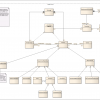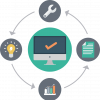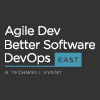 |
Strengthening System Resilience with Chaos Engineering Testing continuous technological change can seem like chaos. There are many challenges that need to be managed, such as unavailability of power, excessive temperature, incorrect configuration, unexpected behavior of services, network downtime, and processing slowdown in production. By deliberately engineering chaos, we’ll be able to discover many of our systems’ weaknesses before our users do.
|
|
 |
How Continuous Testing Is Done in DevOps DevOps does speed up your processes and make them more efficient, but companies must focus on quality as well as speed. QA should not live outside the DevOps environment; it should be a fundamental part. If your DevOps ambitions have started with only the development and operations teams, it’s not too late to loop in testing. You must integrate QA into the lifecycle in order to truly achieve DevOps benefits.
|
|
 |
Requirements Mapping Using Business Function Test Suites On this team, testers were overcommitted, avoidable defects were surfacing, and documentation was hard to find. Worse, trust and morale were low. Upgrading tools was out of the question, so the testers decided to take matters into their own hands and create incremental change themselves. Here's how a team added a new type of traceability to its requirement test case world.
|
|
 |
4 Strategies for a Structured QA Process Being a software tester is no longer just about finding bugs. It is about continuous improvement, defining a clear test strategy, and going that extra mile to improve quality. Following a consistent, structured approach to QA will help you acquire more knowledge about the product you are testing, ask questions you otherwise may not have thought of, and become a true owner of quality.
|
|
 |
Shifting Left and Going beyond Agile: An Interview with Michael Nauman In this interview, Michael Nauman, a testing lead for AutoCAD Web, explains how we can go beyond basic agile principles. He digs into the current state of shift-left testing, the importance of aligning your DevOps with your automation, and using agile as a starting point on your quality journey.
|
|
 |
How to Adapt to the New Age of Testing and Development: An Interview with Melissa Benua
Podcast
In this interview, Melissa Benua, a senior technical lead at mParticle and senior backend software engineer at PlayFab, explains how the speed of development and testing has changed, as well as how to adapt to the new era of software.
|
|
 |
Employ Continuous Integration Processes to Make Your Code Work: An Interview with Melissa Benua
Video
In this interview, Melissa Benua, senior backend engineer for PlayFab, explains the new way of life that continuous integration brings. She imparts practical advice for creating builds and running automation on the fly without spending hundreds of hours or thousands of dollars.
|
|
 |
Better Test Automation, Metrics, and Measurement: An Interview with Mike Sowers
Podcast
In this interview, TechWell CIO and consultant Mike Sowers details key metrics that test managers employ to determine software quality, how to know a piece of software's readiness, and guidelines for developing a successful test measurement program.
|
|
 |
Testing in Production
Slideshow
How do you know your feature is working perfectly in production? And if something breaks in production, how will you know?
|
Talia Nassi
|
 |
Risk Based Testing – Are You Talking the Talk, Or Walking the Walk?
Slideshow
Risk-based testing is essential to focus our testing, but it is not always easy to apply to our projects. Risk management tends to focus more on project and process risks (i.e., Will we make the deadline? Do we follow our processes?) and less on the product risks that can act as a foundation for a risk-based approach to test. Including this aspect of risk in your test coverage will give you a solid foundation for defining a test strategy that implements and executes the right tests with the right intensity to mitigate the most critical product risks. In this presentation, Gitte Ottosen walks you through approaches to lightweight product risk analysis that can be applied whether you are working in a traditional or agile context. The approaches focus on the conversation around identifying and classifying product risks as a team effort, as well as how to use product risk analysis to support test specification and execution.
|
Gitte Ottosen
|
 |
Automated Testing for New-Gen Digital Interactions: Chatbots, Alexa, and Siri
Slideshow
Today’s IT systems communicate with customers through multiple points of engagement and various interfaces, ranging from web, mobile, and voice to BOTs and apps like Alexa and Siri. Sanil Pillai says these systems need to provide seamless handoffs between different points of interaction—while at the same time providing relevant and contextual information quickly. To accomplish this, a team must be able to successfully pair device hardware capabilities and intelligent software technologies such as location intelligence, biometric sensing, and Bluetooth. Testing these systems and interfaces is becoming an increasingly more complex task, and traditional testing and automation processes simply don’t apply to new-generation digital interaction services. Join Sanil as he discusses the testing and automation challenges in new-generation digital interactions using hyperconnected BOTs.
|
Sanil Pillai
|
 |
Machine Data Is EVERYWHERE: Use It for Testing
Slideshow
As more applications are hosted on servers, they produce immense quantities of logging data. Quality engineers should verify that apps are producing log data that is existent, correct, consumable, and complete. Otherwise, apps in production are not easily monitored, have issues that are...
|
Tom Chavez
|
Visit Our Other Communities
AgileConnection is a TechWell community.
Through conferences, training, consulting, and online resources, TechWell helps you develop and deliver great software every day.

